Aspirin (acetlsalicyclic acid) may be formed from salicyclic acid and acetic acid as follows: C7H6O3 (aq) + CH3COOH (aq) → C9H8O4(s) + H2O(l) Salicyclic acid Acetic Acid Aspirin b. How many mol of aspirin may be produced from 1.00*102 mol mol salicylic acid? c. How many g of aspirin may be produced from 1.00*102 mol salicylic acid? d. How many g of acetic acid would be required to completely with the 1.00*102 mol salicylic acid? e. For the conditions in part (d), how many g of aspirin would form?
Aspirin (acetlsalicyclic acid) may be formed from salicyclic acid and acetic acid as follows: C7H6O3 (aq) + CH3COOH (aq) → C9H8O4(s) + H2O(l) Salicyclic acid Acetic Acid Aspirin b. How many mol of aspirin may be produced from 1.00*102 mol mol salicylic acid? c. How many g of aspirin may be produced from 1.00*102 mol salicylic acid? d. How many g of acetic acid would be required to completely with the 1.00*102 mol salicylic acid? e. For the conditions in part (d), how many g of aspirin would form?
General Chemistry - Standalone book (MindTap Course List)
11th Edition
ISBN:9781305580343
Author:Steven D. Gammon, Ebbing, Darrell Ebbing, Steven D., Darrell; Gammon, Darrell Ebbing; Steven D. Gammon, Darrell D.; Gammon, Ebbing; Steven D. Gammon; Darrell
Publisher:Steven D. Gammon, Ebbing, Darrell Ebbing, Steven D., Darrell; Gammon, Darrell Ebbing; Steven D. Gammon, Darrell D.; Gammon, Ebbing; Steven D. Gammon; Darrell
Chapter4: Chemical Reactions
Section: Chapter Questions
Problem 4.106QP: Classify each of the following reactions as a combination reaction, decomposition reaction,...
Related questions
Question
4.106. Aspirin (acetlsalicyclic acid) may be formed from salicyclic acid and acetic acid as follows:
C7H6O3 (aq) + CH3COOH (aq) → C9H8O4(s) + H2O(l)
Salicyclic acid Acetic Acid Aspirin
b. How many mol of aspirin may be produced from 1.00*102 mol mol salicylic acid?
c. How many g of aspirin may be produced from 1.00*102 mol salicylic acid?
d. How many g of acetic acid would be required to completely with the 1.00*102 mol salicylic acid?
e. For the conditions in part (d), how many g of aspirin would form?
Expert Solution
This question has been solved!
Explore an expertly crafted, step-by-step solution for a thorough understanding of key concepts.
This is a popular solution!
Trending now
This is a popular solution!
Step by step
Solved in 3 steps with 2 images

Knowledge Booster
Learn more about
Need a deep-dive on the concept behind this application? Look no further. Learn more about this topic, chemistry and related others by exploring similar questions and additional content below.Recommended textbooks for you
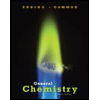
General Chemistry - Standalone book (MindTap Cour…
Chemistry
ISBN:
9781305580343
Author:
Steven D. Gammon, Ebbing, Darrell Ebbing, Steven D., Darrell; Gammon, Darrell Ebbing; Steven D. Gammon, Darrell D.; Gammon, Ebbing; Steven D. Gammon; Darrell
Publisher:
Cengage Learning
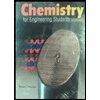
Chemistry for Engineering Students
Chemistry
ISBN:
9781337398909
Author:
Lawrence S. Brown, Tom Holme
Publisher:
Cengage Learning
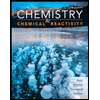
Chemistry & Chemical Reactivity
Chemistry
ISBN:
9781337399074
Author:
John C. Kotz, Paul M. Treichel, John Townsend, David Treichel
Publisher:
Cengage Learning

General Chemistry - Standalone book (MindTap Cour…
Chemistry
ISBN:
9781305580343
Author:
Steven D. Gammon, Ebbing, Darrell Ebbing, Steven D., Darrell; Gammon, Darrell Ebbing; Steven D. Gammon, Darrell D.; Gammon, Ebbing; Steven D. Gammon; Darrell
Publisher:
Cengage Learning

Chemistry for Engineering Students
Chemistry
ISBN:
9781337398909
Author:
Lawrence S. Brown, Tom Holme
Publisher:
Cengage Learning

Chemistry & Chemical Reactivity
Chemistry
ISBN:
9781337399074
Author:
John C. Kotz, Paul M. Treichel, John Townsend, David Treichel
Publisher:
Cengage Learning
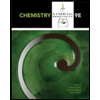
Chemistry & Chemical Reactivity
Chemistry
ISBN:
9781133949640
Author:
John C. Kotz, Paul M. Treichel, John Townsend, David Treichel
Publisher:
Cengage Learning
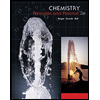
Chemistry: Principles and Practice
Chemistry
ISBN:
9780534420123
Author:
Daniel L. Reger, Scott R. Goode, David W. Ball, Edward Mercer
Publisher:
Cengage Learning
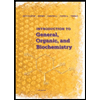
Introduction to General, Organic and Biochemistry
Chemistry
ISBN:
9781285869759
Author:
Frederick A. Bettelheim, William H. Brown, Mary K. Campbell, Shawn O. Farrell, Omar Torres
Publisher:
Cengage Learning